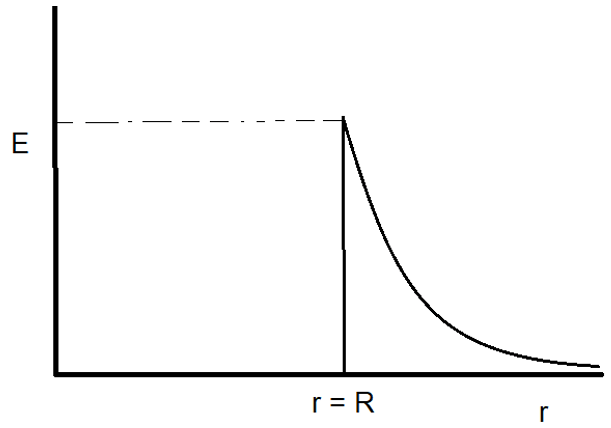This set of Engineering Physics Multiple Choice Questions & Answers (MCQs) focuses on “Maxwell’s Equations”.
1. Which of the following is the expression for Lorentz force?
a) qE
b) q (v X B)
c) ma + qE
d) qE + q (v X B)
View Answer
Explanation: Lorentz force is the force on a particle when it moves through a medium where both magnetic and electric fields are present.
2. The velocity of a charged particle to keep moving in the same direction, in a region where electric and magnetic fields are perpendicular to each other, is _______________
a) E/B
b) B/E
c) E/B + qE/B
d) B/E + qB/E
View Answer
Explanation: As we know, Lorentz force = qE + q (v X B).
Now, as we know, for the particle to move in same direction, the net force on it should be zero.
Therefore, qE + q (v X B) = 0
Solving for v, we get, v = E/B.
3. The entire theory of electromagnetic waves is contained in Maxwell’s equations.
a) True
b) False
View Answer
Explanation: Maxwell’s equation is a set of four equations with the help of which, every concept of Maxwell’s equation can be solved and understood.
4. Differential form of Gauss’s law in magneto statics is _____________
a) div B = ρ/εo
b) div B = 0
c) div B = -dB/dT
d) div B = μJ
View Answer
Explanation: Gauss’s law in magneto statics states that the surface integration of magnetic field over a closed surface is zero. Its differential form is: div B = 0.
5. Magnetic field can be produced by ___________
a) Conduction current
b) Displacement current
c) Both conduction and displacement current
d) It is produced naturally
View Answer
Explanation: Earlier it was believed it was believed that only the conduction current could produce magnetic field. Later, Maxwell showed that displacement current can also produce magnetic field. It was known as Maxwell-Ampere law.
6. In vacuum or free space, what observations are made?
a) ρ = ρo, J = 0
b) ρ = 0, J = Jo
c) ρ = 0, J = 0
d) ρ = ρo, J = Jo
View Answer
Explanation: In vacuum or free space, there is no charge or current. Thus, in that case, ρ is equal to zero and the current density, J is also equal to zero.
7. A point charge of 10 X 10-6 C is at the centre of a cubical Gaussian surface of sides 0.5 m. What is the flux for the surface?
a) 1.12 X 105 Nm2/C
b) 2.45 X 105 Nm2/C
c) 3.12 X 105 Nm2/C
d) 3.45 X 105 Nm2/C
View Answer
Explanation: We know that for a Gaussian surface, flux = q/ε
Here, q = 10-6 C and ε = 8.85 X 10-12 C/Nm2
Therefore, flux = 10-6/8.85 X 10-12
= 1.12 X 105 Nm2/C.
8. In an electromagnetic wave, the electric field of amplitude 6.2 V/m oscillates with a frequency of 2.4 X 1010 Hz. The Energy density of the wave is __________
a) 1.4 X 10-10J/m3
b) 2.4 X 10-10J/m3
c) 3.4 X 10-10J/m3
d) 4.4 X 10-10J/m3
View Answer
Explanation: From Maxwell’s equation, we know, Energy density = εE2
Here, Emax = 6.2 V/m and ε = 8.85 X 10-12 C2/Nm2
Therefore, Energy Density = 8.85 X 10-12 X 6.2 X 6.2
= 3.4 X 10-10J/m3.
9. Which of the following is the expression for the continuity equation?
a) ρ + J = 0
b) dρ/dt + div.J = 0
c) dρ/dt + J = 0
d) ρ + div J = 0
View Answer
Explanation: Continuity equation shows that the sum of the conduction current and the displacement current has the property of continuity.
10. For which body the following variation of E with r is observed?

a) Line of charge
b) Sheet of charge
c) Solid Sphere
d) Spherical Shell
View Answer
Explanation: The given variation of E with r is for a spherical sell. As we know, in a shell, all the charges are present on the surface and no charges are present on the cavity. Thus, the electric field inside is zero and outside it decreases.
11. The property of magnetic field to converge electrons is used in microscopes as ___________
a) Magnetic Convergence
b) Magnetic plate
c) Magnetic field
d) Magnetic Lens
View Answer
Explanation: When a charge is moving in a magnetic field, it feels a force perpendicular to its direction of motion and the direction of the magnetic field. Due to this property, magnetic field can be used to converge electrons.
12. If the velocity of a charged particle in perpendicular electric and magnetic field is 7.27 X 106m/s and the Electric field is 6 X 106 N/c, what should be the value of magnetic field for velocity sector?
a) 0.45 T
b) 0.78 T
c) 0.83 T
d) 0.94 T
View Answer
Explanation: As we know, for velocity selector, v = E/B
Therefore, B = E/v
= 6 X 106/7.27 X 106
= 0.83 T.
13. Which of the following laws do not form a Maxwell equation?
a) Planck’s law
b) Gauss’s Law
c) Faraday’s law
d) Ampere’s Law
View Answer
Explanation: The four Maxwell equations are the gauss’s law in electrostatics, gauss’s law in magneto statics, Faraday’s law of electromagnetic induction and Ampere-Maxwell law.
Sanfoundry Global Education & Learning Series – Engineering Physics.
To practice all areas of Engineering Physics, here is complete set of 1000+ Multiple Choice Questions and Answers.
If you find a mistake in question / option / answer, kindly take a screenshot and email to [email protected]
